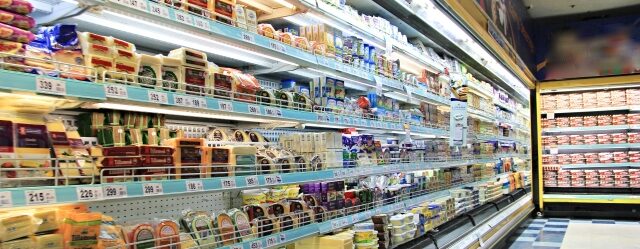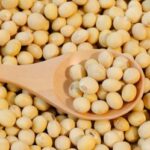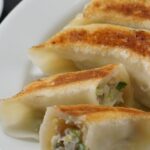
On March 28, 2022, the Consumer Affairs Agency (CAA) published the “The FY 2021 Results of a fact-finding survey on new labeling system for country of origin of ingredients for processed foods”. New labeling system for countries of origin of ingredients started with the revision of Food Labeling Standards in September 2017, and the new system was introduced in April 2022 after the completion of the transitional period. We would like to organize the published survey results here so that we can take the opportunity to look back on the system revision and subsequent labeling.
Summary of the survey
The fact-finding survey was launched in 2019, and this is the third time it has been conducted so far. The summary of the past three surveys is as follows. There are three survey items related to labeling for countries of origin of ingredients in common, while the other items seem to be surveyed as required by year.
| FY 2019 | FY 2020 | FY 2021 | |
|---|---|---|---|
| Date | July 29, 2019 | July 27, 2020 | July 27, 2021 |
| Location | Supermarket in Yokohama City, Kanagawa Prefecture | ||
| Subjects (breakdown) | 1,514 items on the second shelf from the top of each store shelf (Breakdown: 1,349 domestically made (in Japan) products and 165 imported products) |
1,349 items on the second shelf from the top of each store shelf (Breakdown: 1,231domestically made (in Japan) products and 118 imported products) |
1,744 items on the second shelf from the top of each store shelf (Breakdown: 1,458 domestically made (in Japan) products and 286 imported products) |
| Survey items | (1) Whether the country of origin of ingredients is indicated or not | ||
| (2) Grounds acts/ordinances, etc. on labeling countries of origin of ingredients | |||
| (3) Labeling methods based on new labeling system for country of origin of ingredients | |||
| (4) Implementation status of labeling based on Food Labeling Standards | (4) Status of initiatives of the legibility improvement of allergen labeling | ||
| (5) Status of non-use labeling, etc. for food additives | |||
| Method of the surveys | Confirm labeling place of mandatory labeling items (collective labeling frame) and claims labeling, etc. on containers and packaging by taking pictures with a digital camera. | ||
Whether the country of origin of ingredients is indicated or not
The summary of the past three surveys is as follows. The results of the survey on “no labeling of the country of origin of ingredients” in FY2021 may be due to the fact that there were approximately six months remaining until the end of the transitional period when the survey was conducted (in many cases, mainly foods with a short shelf life were switched to the new labeling system after September 2021).
| FY 2019 | FY 2020 | FY 2021 | |
|---|---|---|---|
| The country of origin of ingredients is indicated | 494 | 627 | 1,122 |
| The country of origin of ingredients is not indicated | 855 | 602 | 332 |
| Total | 1,349 | 1,229* | 1,454* |
* Excluding processed foods consisting solely of additives (2 items in 2020 and 4 items in 2021).
Grounds acts/ordinances for products with labeling for the countries of origin of ingredients
See the following result: “②New labeling for countries of origin of ingredients” has increased the most for the three years of the survey period, which indicates that many foods were subject to new labeling system for the first time.
Labeling method for products with new labeling for countries of origin of ingredients
See the following result: Labeling in descending order of weight by country is indicated the most.
When the subject ingredients are fresh foods
| FY 2019 | FY 2020 | FY 2021 | |
|---|---|---|---|
| ① Conventional labeling for countries of origin of ingredients (Appended Table 15 Food Labeling Standards) |
91 | 88 | 87 |
| ② New labeling for countries of origin of ingredients (Article 3 Food Labeling Standards (excluding Appended Table 15)) |
274 | 457 | 892 |
| ③ The Rice Traceability Act | 99 | 55 | 98 |
| ④ Law Concerning Liquor Business Associations and Measures for securing Revenue from Liquor Tax | 14 | 11 | 26 |
| ⑤ Fair Competition Code | 15 | 14 | 18 |
| ⑥ Industry guidelines, etc. | 1 | 2 | 1 |
| Total | 494 | 627 | 1,122 |
When the subject ingredients are processed foods
| FY 2019 | FY 2020 | FY 2021 | |
|---|---|---|---|
| Labeling for place of origin (labeling in descending order of weight by country) | 131 | 161 | 244 |
| Labeling for the place of origin (“And/Or” labeling)* | 2 | 6 | 21 |
| Labeling for the place of origin (“All inclusive” labeling) * | 2 | 8 | 9 |
| Labeling for the place of origin (“All inclusive” labeling & “And/Or” labeling ) | 0 | 0 | 8 |
| Total | 135 | 175 | 282 |
* “And/Or” labeling: A labeling method listing potential supplying countries as countries of origin of ingredients in descending order by weight based on the past records or the future plans on ingredients use for a defined period of time in the past or in the future, whose country names will be connected with “or.”
* “All inclusive” labeling: A labelling method for bundling foreign supplying countries together in a category classed as “import”.
Regarding improvement of the legibility of allergen labels
Finally, here are some excerpts from the results of the survey on improvement of the legibility of allergen labels, which was conducted only in FY 2021.
The labeling method among products that have an indication of allergens within the collective labeling frame
| Number of products | |
|---|---|
| Individual labeling* | 445 |
| Collective labelling* | 588 |
| Total | 1,033 |
* “Individual labeling”: A labeling method stating that specified allergens (mandatory labeling items for allergens in Japan) are included in parentheses immediately after the names of each ingredient/additive are labeled.
*“Collective labeling”: A labeling method in which “(一部に○○・○○・…を含む) (EN: partially contains XX・XX・… ) ” is labeled at the end of the ingredient column (when the ingredients and additives are listed separately by providing respective columns, the end of the ingredient column and the end of the additive column, respectively).
Presence/absence of claims for allergen outside collective labeling frame
| Number of products | |
|---|---|
| Presence of labeling | 598 |
| Absence of labeling | 435 |
| Total | 1,033 |
Presence/absence of the labeling scope (number of subject items) among allergen claims outside the collective frame
| Number of products | |
|---|---|
| Labeling indicating “only specified allergens”* | 7 |
| Labeling indicating “specified allergens, etc. “* | 534 |
| Absence of labeling | 57 |
| Total | 598 |
Examples of “labeling scope of allergens (number of items subject to allergen labeling)”
-Labeling indicating “only specified allergens” (mandatory labeling items for allergens in Japan): “Seven mandatory labeling allergens are in the scope”, “Allergens (only mandatory labeling items for allergens)”, etc.
-Labeling indicating “specified allergens, etc. “(mandatory & voluntary labeling items for allergens in Japan): “28 allergens are in the labeling scope”, “Allergens (28 items)”, etc.
Presence/absence of “labeling indicating no specified allergens are used” on products that do not have an indication of allergens within the collective labeling frame
| Number of products | |
|---|---|
| Presence of labeling | 47 |
| Absence of labeling | 410 |
| Total | 457 |
Other survey results can be found such as “labeling methods for characters for products with allergen claims outside the collective labeling frame (“colour of characters”, “size of characters”, “thickness of characters” and “presence/absence of underlining” compared with the characters in the collective labeling frame)”
Regarding labeling methods for countries of origin of ingredients, I think that it is only a grasp of the actual situation. Allergen labeling, however, includes information on the labeling scope of allergens and how to indicate the characters, which may provide you with hints for future improvements.
References
“Results of fact-finding survey on new labeling system for country of origin of ingredients for processed foods” (CAA)
Share/Like/Follow:
Newsletter Signup
We issue monthly e-newsletters, which provide you with the latest updates on food labeling/regulations in Japan.
If you want to make sure to not miss any issue, please click below.
Related Service
Research Services on Ingredients & Food Labeling -For the Japanese Market-
We verify the conformity of ingredients and additives with the standards for use in Japan based on specifications such as formulation lists. We also verify the conformity of the proposed labeling of ingredient names, nutrients, etc. with the labeling standards based on specifications such as formulation lists.

Label bank Co., Ltd. CEO (Founder)
Born in Japan. Working on solving various issues related to food labeling operations. Also regularly gives lectures for various organizations in Japan.
Co-author of ‘Latest edition: Guide book Food Labeling Law and related business practical points – from scratch (Japanese version only)’ (DAI-ICHI HOKI CO., LTD/2019).






